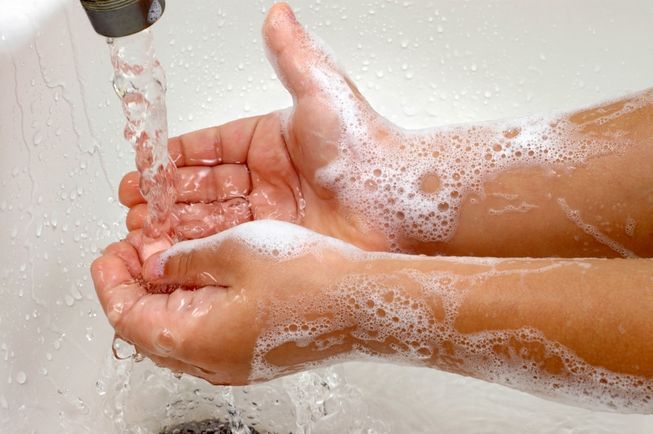As parents and teachers of young children are well aware that the close proximity of children and hands-on materials in their setting can expose children to many new germs. Preschool and kindergarten children’s immune systems are not fully developed making them more susceptible to infection. Most importantly, young children are just learning how to be safe and healthy within a group. In the beginning of the year, teachers like to teach and reinforce the habit of cleaning hands frequently throughout the day.

You know how hard you work to keep your child clean and germ-free. But it’s a messy world and young children love to “get down and dirty.” While we don’t want to limit children’s opportunities to explore the world around them, we do want to protect them from getting sick. There are simple things you can do at home and away that will help your child learn about keeping clean and safe. If your child has ever coughed without covering his mouth – or touched toys, cupboards, tables without washing his hands – your home likely has germs. At Kinderpillar we use fun classroom activities to help your child discover how germs spread and how to protect himself. He is learning lifelong strategies for keeping himself, his friends and family health.
Hygiene is an important educational topic that is taught in school. It stresses the importance of healthy habits and protections. These are skills that help your child feel healthy and safe in school and in the world.
Here are a few activities to consider at home and at school.
Wash, Wash, Wash Your Hands.Did you know that when washing hands, your child should use warm, soapy water and rub vigorously for at least 20 seconds? Often children do not take that long. Hand washing is your best defense against germs and bacteria. It is important for you and your child to wash hands for a full 20 seconds, about the same amount of time it takes to sing a children’s song. Invite your child to sing one of these songs as she washes up. It will make the time go by quickly.
Try this one to the tune of “Row, Row, Row Your Boat”:
Wash, wash, wash your hands
Soap will make them clean
Wash away, wash away, wash away, wash away…
Germs that are so mean.
Here is another song to sing to the tune of The Itsy Bitsy Spider”
The Itsy Bitsy germies
Hide on the dirty hands
Out came the soap
And washed the germies out
Down went wipes
Into the garbage can
And those itsy bitsy germies,
Were gone from every hand!
Teach your child the “elbow cough”!
One of the big problems with asking your child to “cover his mouth” when he coughs is the germs go right into his bare hands. Hands are one of the main ways germs are spread. Encourage your child to cough into his elbow instead of their hands. It’s a quick, simple technique that works well when he can’t get to a tissue in time!
WHEN To Wash Your Hands? Invite children to brainstorm a list of times to wash their hands. Here are a few suggestions to get the conversation started.
When to wash your hands at school….
1. when you arrive
2. after painting
3. after playing in the water/sand box
4. before and after you eat
5. after you blow your nose
6. after using the toilet
7. after playing outside
A Counting Game!
Teachers use counting fingerplays to teach children numbers and numeration and counting. This familiar counting game can reinforce the importance of washing hands.
Five Little Germies (tune: Five Little Monkeys)
Five little germies
Crawling on our hands
One jumps off
When we hold someone’s hand
The mother called the doctor
And the doctor said…
“Wipe those hands
To stop the germs spread”
This fingerplay/song would continue with four, three, two, one little germies (could be microbes) and the last verse would be:
No little germies
Really can be seen
We wash and dry
To keep hands clean!
The Science of Good Healthy Habits. Science is essential to help children learn about healthy habits and good hygiene. Germs are impossible for children to see so it is difficult for them to understand why it is important to wash hands. Here are two activities to try in school or at home to demonstrate where the germs are!
WATCH GERMS SPREAD! This is a hands-on science activity for demonstrating how unseen germs are spread when hands are not clean. The activity is messy but it clearly shows where germs can hide! To do this you can fill a large plastic bag or flat pan with baby powder or flour. Explain that you have a container full of “pretend germs”. You may need to reassure children that they are not real! Have them pretend that they forgot to wash their hands and ask children to dip their hand in the mixture before they go off to the next activity. Soon children will see the “trail of germs” they are leaving on everything they touch! End the activity by giving each child a wet wipe to clean off the germs or have them wash their hands. They can also use the wet wipe or towel to clean of the “germs” they left around the room. NO trail now! This is one of the best ways to show children how hand washing and wiping stops the spread of germs.
